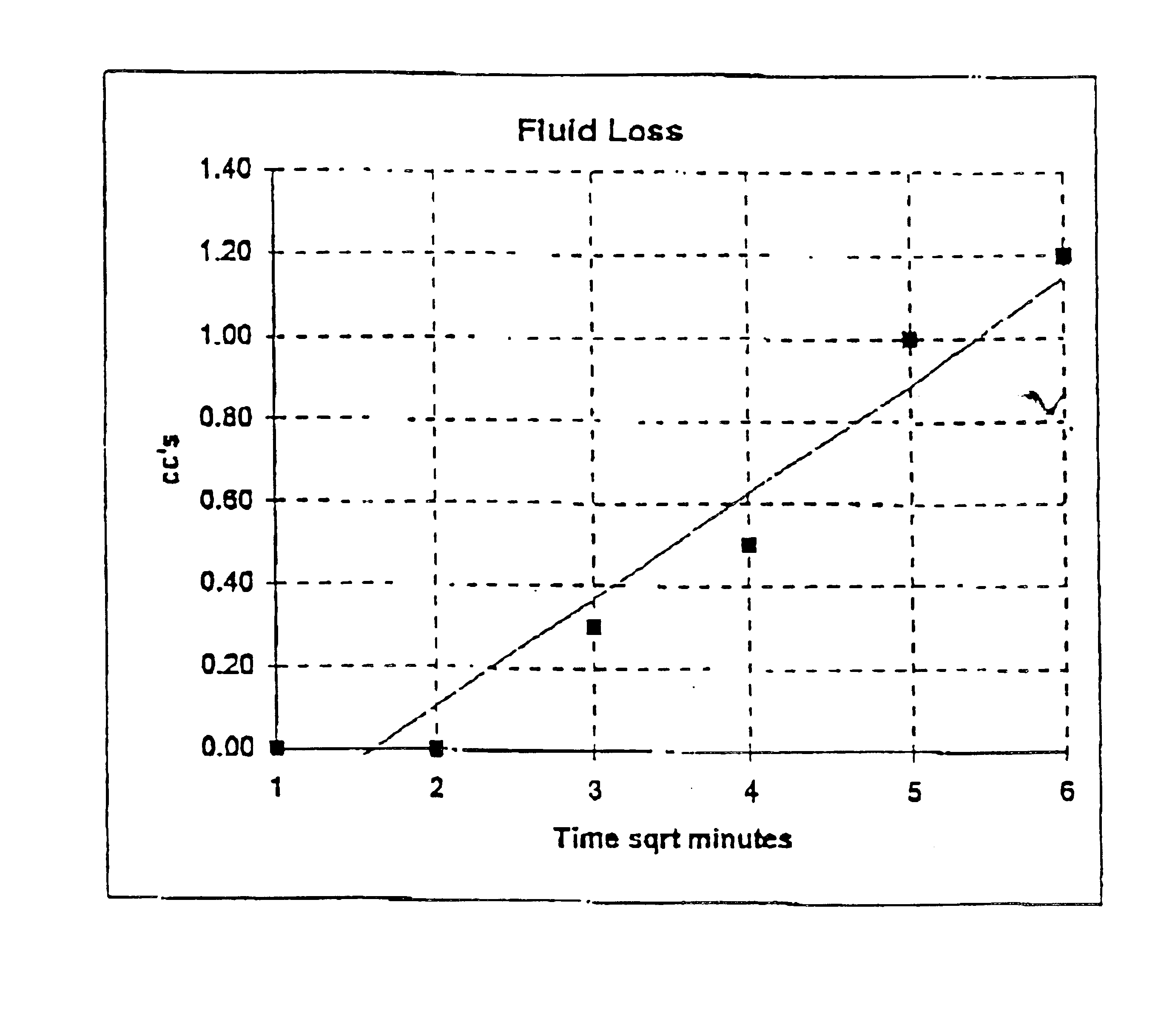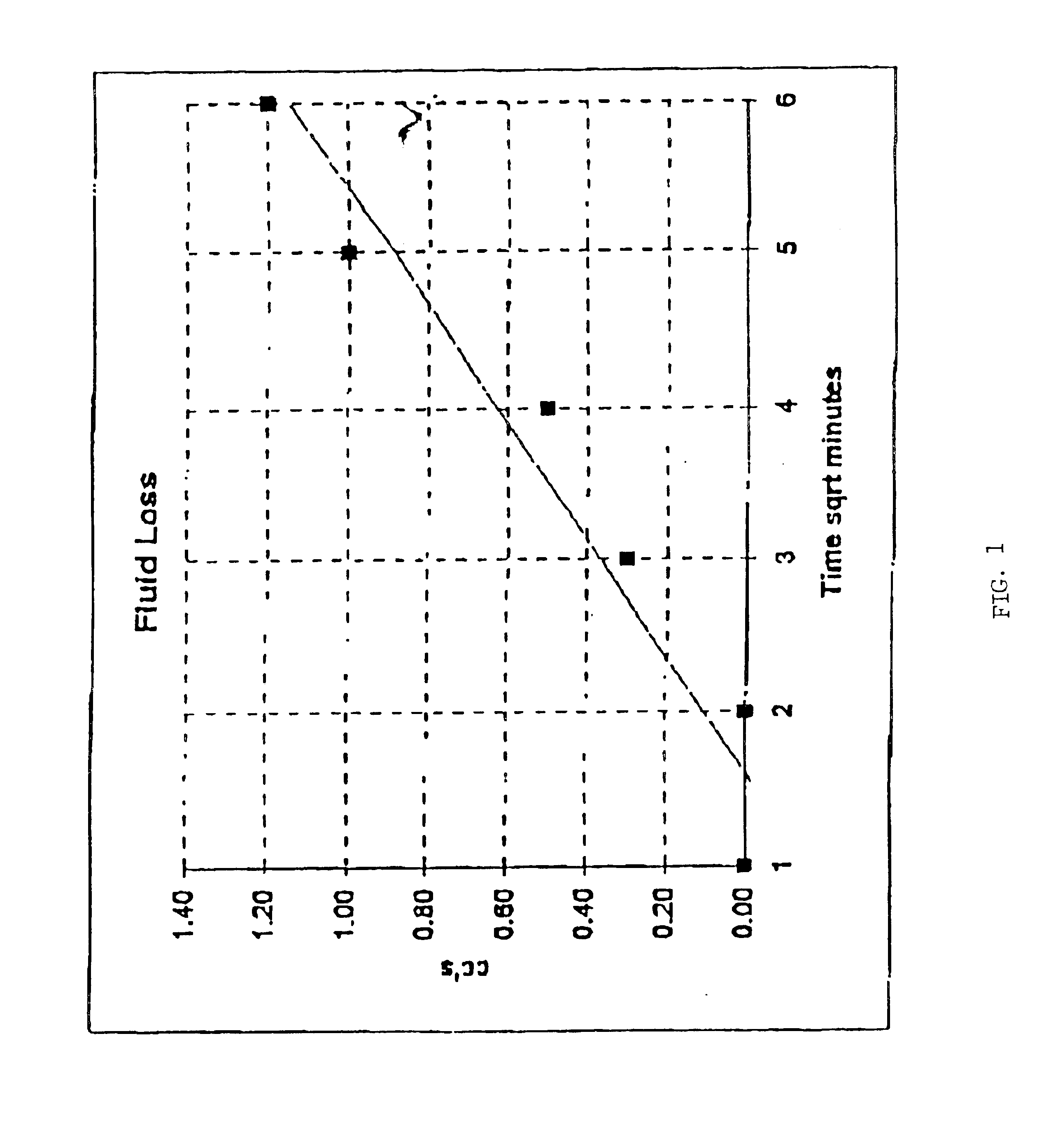Gelled hydrocarbon compositions and methods for use thereof
a hydrocarbon composition and gelled technology, applied in the field of gelled organic compositions, can solve the problems of affecting the stability of methods employing this and similar chemistries, affecting the stability of gelled hydrocarbon compositions, etc., to achieve the effect of increasing stability, reducing the risk of contamination, and reducing the number of gelled hydrocarbons
- Summary
- Abstract
- Description
- Claims
- Application Information
AI Technical Summary
Benefits of technology
Problems solved by technology
Method used
Image
Examples
examples
The following examples are illustrative and should not be construed as limiting the scope of the invention or claims thereof.
In Examples 1-15, non-phosphate gelled fluids were mixed using the following procedure: 214 g diesel organic fluid is measured into clean dry jar & mounted on a Servodyne Lightning Mixture Model 444530 made by Cole-Palmer Instruments. A 1″ diameter 6 blade paddle is immersed half-way into the volume of the fluid in a slightly off-center position. The mixer is set at 2000 RPM (+ / −50 RPM) and the components added and mixed.
examples 1-15
were each carried out at a temperature of 75° C.
example 1
Preparation and Use of Particulate Reaction Product Formed from Fatty Acid, Aluminum Carboxylic Acid Salt, and Aluminum Second Metal Source Compound
13.65 grams of tall oil fatty acid (“SLYFAT FA-1” available from Arizona Chemicals, also available as “G20” from BJ Services) was delivered into a clean, dry 250 milliliter beaker.
SYLFAT FA-1 contains 92.7% fatty acids, 2.8% unsaponifiables and 4.5% rosin acids, with less than 0.1% moisture and less than 0.01% ash. The fatty acid content of SYLFAT FA-1 includes 34% non-conjugated linoleic, 9% conjugated linoleic, 44% oleic, and 5% saturated. SYLFAT FA-1 has an acid number of 194, a saponification number of 197, and an iodine number of 131. SYLFAT FA-1 Sp has a saponification number of 198.
In this example, 3 grams of aluminum 2-ethylhexanoate (aluminum octoate) was dispersed into the tall oil fatty acid. 1 gram of a 10% aluminum isopropoxide solution was also added. This mixture was then blended with a spatula until a viscous to solid mas...
PUM
| Property | Measurement | Unit |
|---|---|---|
| temperatures | aaaaa | aaaaa |
| temperatures | aaaaa | aaaaa |
| viscosity | aaaaa | aaaaa |
Abstract
Description
Claims
Application Information
 Login to View More
Login to View More - R&D
- Intellectual Property
- Life Sciences
- Materials
- Tech Scout
- Unparalleled Data Quality
- Higher Quality Content
- 60% Fewer Hallucinations
Browse by: Latest US Patents, China's latest patents, Technical Efficacy Thesaurus, Application Domain, Technology Topic, Popular Technical Reports.
© 2025 PatSnap. All rights reserved.Legal|Privacy policy|Modern Slavery Act Transparency Statement|Sitemap|About US| Contact US: help@patsnap.com



